
A scythe is an agricultural hand tool for mowing grass or harvesting crops. It is historically used to cut down or reap edible grains, before the process of threshing. The scythe has been largely replaced by horse-drawn and then tractor machinery, but is still used in some areas of Europe and Asia. Reapers are bladed machines that automate the cutting of the scythe, and sometimes subsequent steps in preparing the grain or the straw or hay.

Winslow Homer was an American landscape painter and illustrator, best known for his marine subjects. He is considered one of the foremost painters of 19th-century America and a preeminent figure in American art in general.

A sickle, bagging hook, reaping-hook or grasshook is a single-handed agricultural tool designed with variously curved blades and typically used for harvesting or reaping grain crops, or cutting succulent forage chiefly for feeding livestock. Falx was a synonym but was later used to mean any of a number of tools that had a curved blade that was sharp on the inside edge such as a scythe.

The Gleaners is an oil painting by Jean-François Millet completed in 1857.

James Earl was an American painter and younger brother of fellow portrait painter Ralph Earl. He was born in Leicester, Massachusetts, and died of yellow fever in Charleston, South Carolina. He lived and worked in London for ten years, where he married and had three children and enrolled in the Royal Academy in 1789. His British clientele were mostly Loyalists living in exile, though there is no evidence that he was a committed Loyalist himself. Among his best known works are Rebecca Pritchard Mills and Her Daughter Eliza Shrewsbury and a portrait of Charles Cotesworth Pinckney.

Darius Cobb was an American painter. Cobb was considered to be one of America's best painters during his lifetime, as well as a painter of society portraits, landscape, religious themes and historical costumes. He was also noted as a musician, singer, poet, lecturer, lithographer, and art critic.

Arles: View from the Wheat Fields was painted by Vincent van Gogh in June 1888, among a number of paintings he made of wheat fields that summer. It is currently displayed at the Musee Rodin in Paris, France.

Wheat Fields is a series of dozens of paintings by Dutch Post-Impressionist artist Vincent van Gogh, borne out of his religious studies and sermons, connection to nature, appreciation of manual laborers and desire to provide a means of offering comfort to others. The wheat field works demonstrate his progression as an artist from the drab Wheat Sheaves made in 1885 in the Netherlands to the colorful and dramatic 1888–1890 paintings from Arles, Saint-Rémy and Auvers-sur-Oise in rural France.

A Visit from the Old Mistress is an 1876 painting by the prominent 19th-century American artist Winslow Homer. It was one of several works that Homer is thought to have created during a mid-1870s visit to Virginia, where he had served for a time as a Union war correspondent during the Civil War. Scholars have noted that the painting's composition is taken from Homer's earlier painting Prisoners from the Front, which depicts a group of captive Confederate soldiers defiantly regarding a Union officer. Put on display in the northern states for a northern audience, A Visit from the Old Mistress, along with Homer's other paintings of black southern life from the Reconstruction era, has been praised as an "invaluable record of an important segment of life in Virginia during the Reconstruction."

In Front of Yorktown is an oil painting completed in 1863 by the American artist Winslow Homer. It depicts men from McClellan's Army of the Potomac, before the Siege of Yorktown during the American Civil War. The painting is in the collection of the Yale University Art Gallery.

The Bright Side is an oil painting by the American artist Winslow Homer. Painted in 1865, the concluding year of the American Civil War, the work depicts four African American Union Army teamsters sitting on the sunny side of a Sibley tent. The painting is in the collection of the Fine Arts Museums of San Francisco-(De Young)
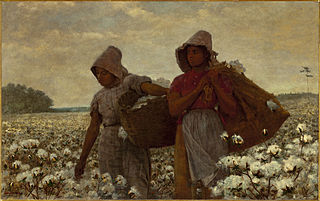
The Cotton Pickers is an 1876 oil painting by Winslow Homer. It depicts two young African-American women in a cotton field.
Stately, silent and with barely a flicker of sadness on their faces, the two black women in the painting are unmistakable in their disillusionment: they picked cotton before the war and they are still picking cotton afterward.

The Fog Warning is one of several paintings on marine subjects by the late-19th-century American painter Winslow Homer (1836–1910). Together with The Herring Net and Breezing Up, painted the same year and also depicting the hard lives of fishermen in Maine, it is considered among his best works on such topics.
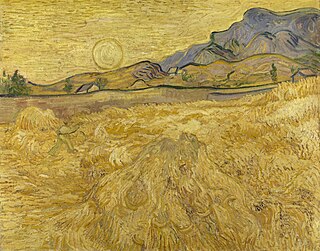
Reaper, Wheat Field with Reaper, or Wheat Field with Reaper and Sun is the title given to each of a series of three oil-on-canvas paintings by Vincent van Gogh of a man reaping a wheat field under a bright early-morning sun. To the artist, the reaper represented death and "humanity would be the wheat being reaped". However, Van Gogh did not consider the work to be sad but "almost smiling" and taking "place in broad daylight with a sun that floods everything with a light of fine gold".
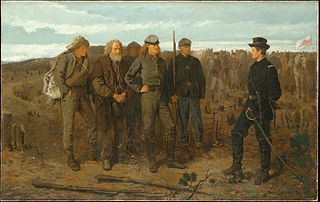
Prisoners from the Front is an 1866 painting by American artist Winslow Homer. One of Homer's most notable early works, the painting depicts a scene in which Confederate officers surrender to Union Brigadier General Francis Channing Barlow during the American Civil War. Homer's experience as a war correspondent likely contributed to his rendering of the work.

Daniel Chester French (1850–1931) was an American sculptor who was active in the nineteenth and twentieth centuries. He was born in Exeter, New Hampshire, to Anne Richardson French and Henry Flagg French on April 20, 1850. His father, a polymath, was a judge and college president who popularized the French drain. In 1867, the family moved to Concord, Massachusetts, and French enrolled at the Massachusetts Institute of Technology. French did not perform well academically and, after a year, he left the college and returned to Concord where he first learned sculpture while attending art classes with Louisa May Alcott. Between 1869 and 1872, French studied anatomy with William Rimmer, and in 1870 he undertook a one-month apprenticeship with the sculptor John Quincy Adams Ward. After completing The Minute Man in 1875, French studied sculpture in Florence, Italy, for a year, during part of which he worked out of Thomas Ball's studio.
Hermann Traugott Louis Fuechsel, also known as Füchsel or Fuchsel, was a German-American landscape painter, and member of the Düsseldorf school and Hudson River School.
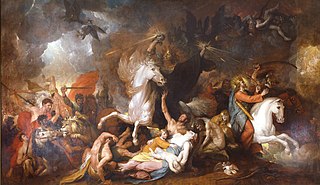
Death on the Pale Horse is the title of three different versions of a work by Benjamin West. The first of these is a large drawing from 1783, which has been in the collection of the Royal Academy of Art in London since 1784. The second version is a painting from 1796, now in the Detroit Institute of Art. The third version is a 25-foot wide painting that West exhibited in 1817 in a special gallery on the street of Pall Mall, where he charged admission for visitors who wished to see it. This version was acquired by the Pennsylvania Academy of the Fine Arts in Philadelphia in 1835. All three versions of Death on the Pale Horse were inspired by apocalyptic imagery from the Book of Revelation. They are significant examples of the Sublime in British painting.
Milo Merle Naeve was an American art historian, curator, and museum administrator who worked at the Winterthur Museum, Garden and Library, Colonial Williamsburg, the Colorado Springs Fine Arts Center, and the Art Institute of Chicago, where he held the first curatorship in American arts and the first endowed curatorship at the Institute.
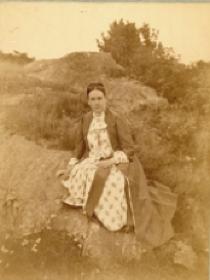
Rosanna "Rose" Duncan Lamb was an American portrait painter.




















